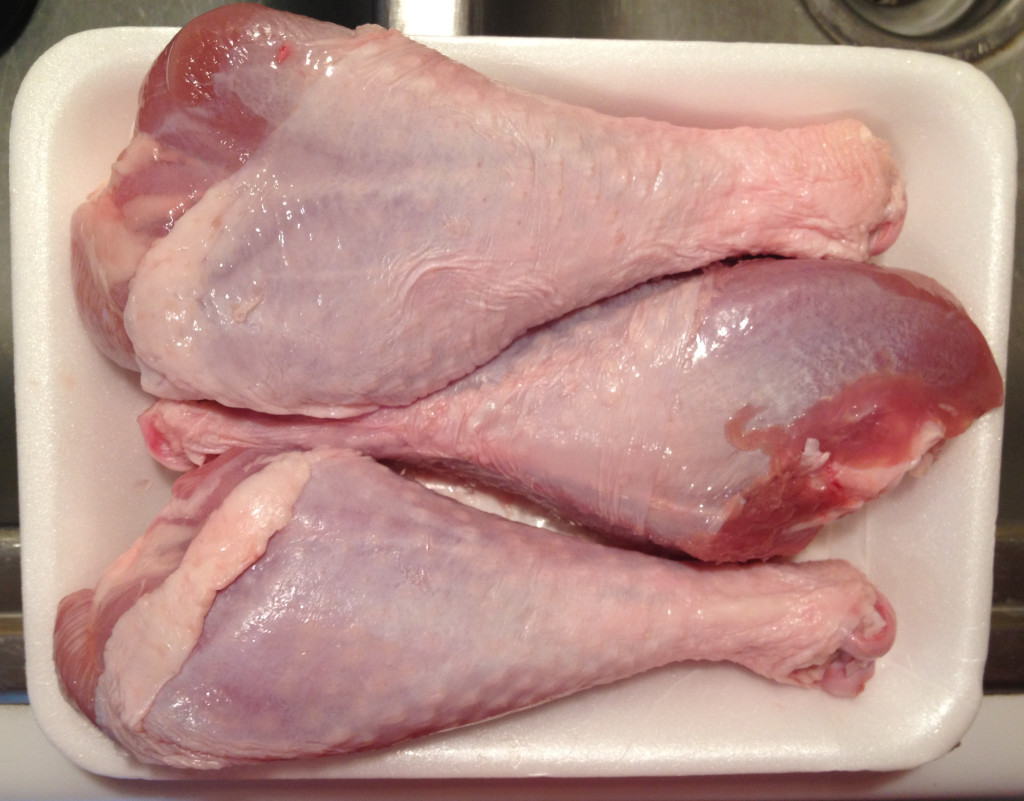For many people, the best part of the Thanksgiving turkey is scoring a juicy, flavorful leg. While preferences vary between white and dark meat, there’s no debate that turkey legs fall firmly into the dark meat camp. But why is that? Let’s take a closer look at what classifies a turkey’s limbs as dark meat.
What is Dark Meat?
Dark meat refers to muscles that are more active and require higher blood flow This includes the legs and thighs on poultry, The increased myoglobin in these muscles gives dark meat its darker color
Myoglobin helps deliver oxygen to active muscles. Since a turkey’s legs and thighs are constantly in motion as it walks and moves, they contain more myoglobin. This makes them redder and darker.
Less active muscles like the breast have less need for oxygen Thus they contain less myoglobin and appear lighter in color.
So dark meat equates to more muscle movement and oxygen needs.
Turkey Legs are Built for Mobility
A turkey uses its legs everyday to walk, scratch, and move around The drumstick and thigh are key to the bird’s mobility.
The leg muscles must contract constantly to propel the turkey’s weight. This makes them darker and more vascularized. More blood flow brings oxygen and myoglobin.
So turkey legs have a high concentration of myoglobin to facilitate movement. This classifies them as dark meat.
Benefits of Turkey Leg Dark Meat
The extra myoglobin in turkey legs provides some health and culinary benefits:
-
More Iron – Dark meat contains nearly twice the iron of white breast meat. This aids the oxygen carrying capacity of blood.
-
B Vitamins – Dark meat is high in energizing B vitamins like B6 and B12 to support an active lifestyle.
-
Heart Healthy Fats – Despite the stigma, dark meat contains mostly unsaturated fats that are better for cardiovascular health.
-
More Flavor – The extra fat and iron in dark meat gives it more juicy, rich flavor compared to mild white meat.
-
Moist Texture – Dark meat stays moist and tender even when cooked to higher temperatures. White meat dries out much quicker.
So while turkey legs are considered the fattier cut, they provide some nutritional advantages. And their delicious flavor and texture is undeniable.
Composition of a Turkey Leg
Turkey legs contain two distinct muscles that make up the dark meat:
-
Drumstick – This is the lower part of the leg below the knee joint. It consists of the gastrocnemius muscle that controls lower leg movement.
-
Thigh – The thigh contains heavier adductor muscles that allow lateral motion and stability. This is connected to the torso on the upper leg.
Both the drumstick and thigh muscles are constantly activated as the turkey walks and moves about. This makes them redder and darker than the breast which moves less frequently.
Ideal Cooking Methods
To take full advantage of turkey legs’ moist, rich flavor, certain cooking methods work best:
-
Roasting – Low and slow roasting maintains moisture while crisping the skin. Brining enhances flavor.
-
Grilling – Quick grilling over direct heat seals in juices. Basting adds flavor.
-
Braising – Slow cooking legs in flavorful liquid makes them fall-off-the-bone tender.
-
Smoking – A smoky rub and low temperature smoking results in a pink smoke ring and juicy leg meat.
Proper cooking preserves the delicious dark meat while adding outside flavors. Avoid overly drying methods like high heat frying.
Nutritional Profile of Turkey Legs
Here’s how 3 ounces of roasted, skinless turkey leg meat compares nutritionally to the same amount of roasted breast:
| Turkey Leg | Turkey Breast |
|---|---|
| Calories | 162 |
| Fat | 7g |
| Iron | 1.7mg |
| Zinc | 1.5mg |
| B6 | 0.5mg |
| B12 | 0.4mcg |
While fattier, the leg provides more micronutrients. The ideal is enjoying both cuts for a balanced nutrition profile.
The Takeaway on Turkey Legs
So are turkey legs considered dark or white meat? The high myoglobin content clearly places them in the dark meat category. Their active muscles require more oxygen, making them darker and richer in nutrients and flavor.
While white breast meat certainly has its merits, there’s no denying the satisfying texture and taste of delicious turkey legs and thighs. So this Thanksgiving when the turkey hits the table, make sure to stake your claim on those amazing dark meat legs!

What is turkey drumstick used for?
Turkey drumstick is often used in preparations where slow-cooking is required, such as soups, stews, and roasts. It is also popular in certain roasted dishes or barbecues. The dark meat of the turkey drumstick is very flavorful and remains juicy even after long cooking. This makes it ideal for dishes that have a longer cooking time. It can also be used in recipes that say to “pull” the meat, like pulled turkey. Turkey drumsticks can also be roasted in the oven or on the grill, which makes the skin crispy and the meat juicy. It can be served with a variety of side dishes, such as potatoes, vegetables, or rice.
Not only that, but it can be used instead of chicken in most recipes and goes well with pasta or salads. Depending on the preparation method, it can also be used in healthy meals.
What is turkey drumstick?
Turkey drumstick is a term in Dutch that refers to the lower part of a turkeys leg. The meat on this part of the turkey is darker, tastes better, and has more fat than the meat on the breast.
Are smoked turkey legs actually ham?
FAQ
What color is turkey leg meat?
What type of meat are turkey legs?
Why is turkey leg meat brown?
Are legs white or dark meat?
Why are turkey thighs darker than drumsticks?
Muscles that are used more regularly contain more myoglobin. Turkeys use their legs continuously, which is why thighs and drumsticks are dark meat. Flightless domestic turkeys don’t use their chest muscles much. Their well-rested breasts become our white meat. Varying amounts of myoglobin between species accounts for the difference in meat colors.
Is turkey meat dark or white?
Turkey meat is turkey muscle. Whether it’s dark or white simply depends on how much the bird uses it.
What are turkey legs & thighs?
Turkey legs and thighs are dark meat. Turkeys spend a lot of time walking on the ground. Their leg muscles are adapted for regular, continuous use. Leg and thigh muscles consist primarily of red muscle fibers. These fibers contract slowly and split ATP for energy at a relatively low rate. Red muscle fibers rely on aerobic respiration.
Where does dark meat come from?
In turkeys and chickens, dark meat is sourced from the leg or thigh. These animals carry more myoglobin in these locations in order to help deliver oxygen to their muscles as they run around. They need their exercise, too!” White meat includes: Dark meat includes: Poultry nutrition: Is white meat really healthier than dark meat?
Is a turkey leg a ham?
Suspicious eaters hold up a turkey leg and claim it’s ham, based on the appearance of the texture of the meat beneath the skin. For many, the visual here doesn’t line up with the familiar Thanksgiving turkey leg, with its familiar dark meat roasted to a medium-brownish color wrapped in crispy, golden skin.
Why is turkey meat darker?
Myoglobin is found in muscle tissue and also has an affinity for oxygen. “It is the binding state of oxygen to the myoglobin that creates the variation in meat color,” explains Daniel L. Fletcher at the University of Connecticut Department of Animal Science. “The more myoglobin, the darker the meat.” Turkey meat is turkey muscle.
